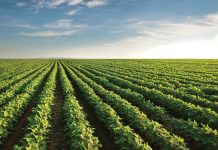Bill Gates once said that the internet would be the new ‘virtual town square’ where online communities gather to interact, discuss and collaborate. To a large extent, COVID has pushed this to a whole new level with digital technologies now changing how we meet, produce, sell and educate – to name but a few. Agriculture and finance were also affected by this digitisation drive. This piece documents how digitisation is providing opportunities in agricultural finance and shares some of the plans that Absa has to improve its financing offering, through digitisation, to agricultural producers in South Africa and beyond.
For a financier, secure lending stands on three principles, namely repayment ability, collateral and current debt burden. Financiers often look to financial statements to gauge a client’s repayment ability, but this also provides challenges with certain (smaller) producers not being able to provide financial statements or good financial performance due to favourable market prices, not reflecting technical production problems or management issues. Repayment ability in agriculture specifically, therefore, has a key element associated with production risk which could play a part in a borrower’s ability to meet its obligations. Production risk is, in turn, impacted by factors such as management practices, weather and disease outbreaks. The availability of historical production data would therefore provide financiers with the opportunity to gauge production and/or financial risk. A solid production track record could also serve as evidence of lower risk to the financier.
Digital technology has now provided the opportunity to gather such production information at scale and the potential to integrate this into financiers’ financing decisions. An example here is remote sensing, whereby satellite images can be used to assess the current health of field crops throughout the production cycle. This can then be combined with biophysical crop models to project what the output at the end of the season will be. It further allows for financing against the projected final crop, but also if applied through time, it gives a production track record that could be considered when historical financial information is not available.
In Absa specifically, the second cycle of a remote sensing pilot is currently underway with maize producers in the summer production areas and wheat producers in the winter rainfall areas. The objective of this pilot is not only to see how crop and weather data generated by external service providers can be integrated into current financial systems and decision-making structures, but also to determine producers’ appetite to use remote sensing technology. In the current round, uptake looks favourable and producers are linking the functionalities to their precision farming techniques to gain the maximum value out of this technology. Similar innovations, within the bank, are also in the pipeline for other agricultural subsectors.
The spinoffs of the technologies mentioned above can also facilitate contributing to the broader environmental, social and governance (ESG) agenda, which is gaining increased traction in the business and policy sphere around the globe. Here remote sensing can assist in the tracking of soil moisture content which could help with determining optimal planting time or regulating irrigation to improve water use efficiency. In the future, digitised systems would also be crucial to show how production and management practices have changed in order to drive carbon emissions down. The challenge that remains is to make the data generated from these technologies user-friendly and accessible to end users and to integrate this into wider systems that also consider data from other sources. Absa AgriBusiness believes that the best approach to these challenges is learning by doing.
There is a saying that you cannot manage what you do not measure. As apparent from the discussion above, digital technologies in agriculture provide all stakeholders the opportunity to effectively gather and measure production data with the ultimate objective of mitigating risk, improving efficiency, and contributing to the global ESG agenda. To harness the full opportunities from these technologies, stakeholders should work together to explore the benefits that these innovations present.
For questions around Absa’s remote sensing initiatives kindly contact Marlene Louw at marlene.louw@absa.africa.














